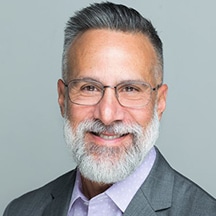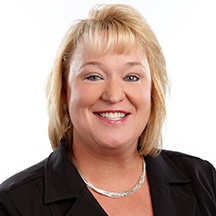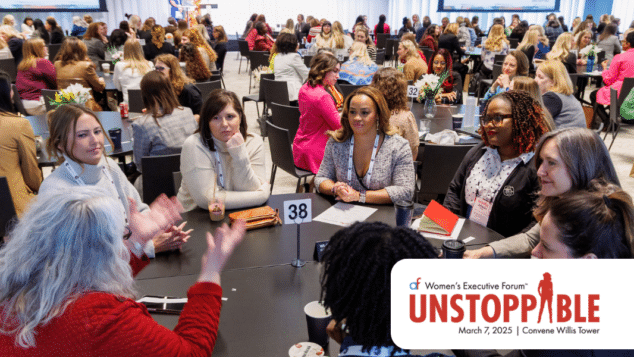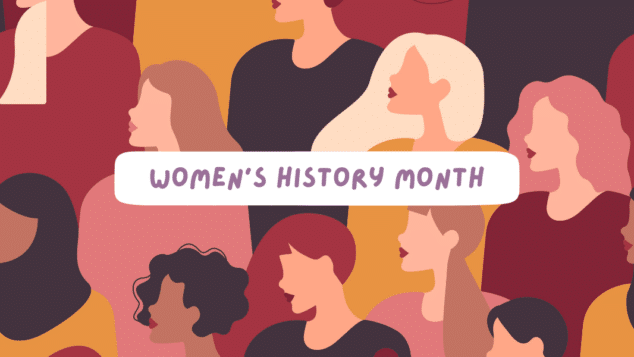Fueling the Journey

When Michelle Mason, CEO of Association Forum, talks about a Welcoming Environment®, she describes it as a journey. There is not an organization around that has completed the work. Rather, we are all at different places on this quest, and there are things that can be done to improve our organizations, our memberships and our leadership. This journey informed the concept of a Welcoming Environment.
Association Forum coined the term to describe the creation of a sense of belonging and connectedness that engages individuals in an authentic manner in which uniqueness is valued, respected and supported through opportunities and interaction. Creating a Welcoming Environment drives deeper engagement and increased participation with the association community and will ultimately increase revenue and build sustainable relationships.
You’ve probably heard these efforts referred to as diversity, equity and inclusion (DE&I), but a Welcoming Environment is even broader — encompassing both the efforts involved and the results. Research shows that creating a Welcoming Environment improves business outcomes. In a study of tech firms, published in June 2020 in the Academy of Management Journal, researchers found that firms with high levels of diversity in both upper management and lower management achieved the greatest levels of productivity. The research also showed that groups with less racial diversity were less capable of making good business decisions, absorbing information and obtaining a competitive advantage.
Why Now?

Jon Hockman, McKinley
Advisors
Creating a Welcoming Environment has been a part of Association Forum’s core values for years. We trademarked the term in 2018 and have developed an online resource kit for association staff to leverage within their own organizations. Each year, we devote an issue of our magazine to the topic of Welcoming Environment. We also host live events around the topic, including our annual national summit. Even with all these efforts, we wanted more. We want to be a catalyst for change, and we want this research to spark action within the community. But first, we knew we had to look inward at our organizations and find what is working and what could be improved. So we embarked on a groundbreaking study, partnering with association consulting firm McKinley Advisors to conduct research in the fall of 2019. Results were compiled and presented in the spring of 2020. “Association Forum deeply believes in creating a Welcoming Environment, and we knew that this work was urgent,” says Mason. Then, amidst the coronavirus pandemic, the deaths of George Floyd and Breonna Taylor sparked a resurgence in the Black Lives Matter movement. Protests sprouted up in cities big and small across the United States. Both corporate and nonprofit organizations scrambled to support the movement, and social media has exploded with ways people from all ethnic backgrounds can support the Black community.
“Hopefully we’ve learned in the last few weeks that we have to lean into the discomfort here,” says Jon Hockman, principal of McKinley Advisors. “There are some ugly truths all around, but there’s also responsibility and an opportunity to do things differently. If it were easy to do, it would have been done a long time ago.”

DJ Johnson, IOM, CAE, AHWONN
DJ Johnson, IOM, CAE, is the vice president of membership and volunteer engagement for the Association for Women’s Health, Obstetric and Neonatal Nurses (AHWONN) and has more than 20 years of association experience. He agrees that this work cannot wait. “When it comes to diversity, equity and inclusion, it’s never a one-and-done conversation,” he says. “My hope is that AHWONN will participate in this survey or a similar one annually in perpetuity so that we have some kind of tool to benchmark how our members feel about us and how our members perceive these issues.”
Whether your organization has just begun this journey, or your team is on the path and not sure where to go next, you’ll find actionable data within this research.
Taking Action
Supported by 12 cosponsoring organizations, our research aims to understand the current state of DE&I efforts in the association sector. Through this initiative, we intend to shed light on the tools, approaches, successes and challenges that associations are facing as they attempt to create organizations that embody the tenets of Welcoming Environments.
“This is just the beginning of what we hope is a longitudinal study of associations creating Welcoming Environments,” says Mason. “We needed to start here to create a benchmark for future research, but we also wanted to invite associations in our community to come along with us on this journey.”
The study invited organizations to survey either their members, their staff or both. The results set up a baseline for other associations to access, and each participating organization was given an in-depth report on their own survey results. In this way, the research reflects an overall starting point for the association community at large but also gives the cosponsoring organizations an idea of where they are in their own journey.
“McKinley did some preliminary work on diversity, equity and inclusion a year ago because we thought there was a gap there,” says Hockman. What they found was that there isn’t much literature on the association space specifically. Most of the research in this area has been conducted in the corporate world, but the team at McKinley knew nonprofits were dealing with similar challenges. Hence, this research is a critical step to driving action within the association community.
The Research
During an initial immersion meeting, the teams from Association Forum and McKinley Advisors discussed goals, methodology and how this research could impact the association community. Next, McKinley’s team held interviews with 25 key contacts and stakeholders, including cosponsoring organizations. The research team also reviewed relevant literature and past research on this topic area — much of it from the corporate space, as mentioned above. Using all of this information, McKinley’s team crafted electronic surveys to be sent to the cosponsoring organizations. Two surveys were created: one for staff and one for members. While the surveys were tailored for the specific audiences, they covered the same topics so that the results could be analyzed side-by-side.
Once the surveys were completed, the results were compiled and analyzed. McKinley held a webinar to present the findings to cosponsoring organizations in May. In June, debriefings were held with each organization to further dive into their individual results. Then, McKinley published the findings in a white paper and also presented them to the association community at the Virtual Summit on Welcoming Environment.
The Findings
The results of the survey can be broken down into four key questions for exploration:
- Are associations representative of their industry or sector?
- What are the perceptions of association members and staff about how well the association is doing in terms of DE&I?
- What challenges are associations facing in implementing action-oriented tactics to foster DE&I?
- What DE&I topics, areas or initiatives are most important to association members and/or staff?
Are associations representative of their industry or sector?
Only 40% of association staff and 44% of members responded “yes” to this question. Therefore, more than half of association staff and members feel that their association is not representative of the industry or are unsure. The survey then asked why and, so as not to suggest answers, left an open space for participants to respond. Lack of racial and ethnic diversity topped the answers for both surveys. Other reasons included lack of gender diversity and lack of diversity in leadership.
One of the challenges associations face in tracking representation is a lack of data and demographics on their members. “It’s basically impossible in a quantitative way to measure progress if you don’t have a data set to start with,” says Hockman.
Unfortunately, many associations don’t track member demographics such as gender, race, ethnicity, sexual orientation, disability and more. And the groups that do track this have usually only done so recently.
Johnson experienced this roadblock at AHWONN and noted that the association just started collecting expanded member demographics last year. The data include gender, work setting, race, sexual orientation and special accommodations (to track members with disabilities). They even ask members if they live in a rural or urban area because of the differences in workplace setting and healthcare access. Unfortunately, only 3% of members have filled in these demographics, but it’s a start.
“We’ve done special campaigns to our members to explain the confidentiality of their information and how we’ll use it,” says Johnson. “It also shows that just because you have a path and a direction doesn’t mean that your membership is automatically going to fall in line. You need to educate them and socialize them to it.”

Joel Albizo, FASAE, APA
Joel Albizo, FASAE, CEO of the American Planning Association (APA), says that his group tracks expanded demographics but also struggles for complete data. Because this is a relatively new practice to the APA, new members’ profiles are much more complete than seasoned members’.
As an initial step, all groups should look at the attributes they’re collecting for their membership and consider where there is room for improvement.
What are the perceptions of association members and staff about how well the association is doing in terms of DE&I?
Responses to this question followed a bell curve for both members and staff. Very few members (4%) called their associations “not at all successful,” and the percentages rose to 31% answering “moderately successful.” The numbers fell again around “very successful” and further still for “extremely successful.” A similar pattern followed for the answers given by association staff.
This lukewarm response indicates there is more work to be done. While organizations may have official policies or committees addressing DE&I, the overall tone among respondents was that this isn’t enough. As McKinley’s team drilled down on the results, they found that members of associations with budgets in the range of $10–$19.9 million were more likely to feel their association has been successful (36%) compared to those from organizations with lower budgets (23%) or higher budgets (27%).
“It raises the question: Are dollars the determinant of success here?” says Hockman. He adds that it would be a shame for organizations to feel they can’t afford a focus on Welcoming Environment because the data show that success is not necessarily about a financial investment. Many organizations are already seeing the financial effects of the economic downturn due to the coronavirus pandemic and will be strapped for resources. Yet, this research reveals several areas of improvement that rely more on strategy and strong decision-making than finances.

Judy Gaus, AEM
For Judy Gaus, vice president of human resources and operations at the Association of Equipment Manufacturers (AEM), allocating funds to these initiatives have helped make them a priority for the organization. “We started going down the path of talking about diversity five years ago, but it’s been very slow, and other strategic priorities got in the way. We set aside money in our budget for diversity this year as a way to operationalize it and move from talking to action,” says Gaus.
In addition to participating in the staff portion of this survey, AEM hired a consultant to take a deeper look at ways the organization can create a Welcoming Environment. The consultant will prioritize the large amount of information contained in the survey results, as well as create a roadmap to start taking action.
Encouragingly, members responded that they feel welcome at association events they attend, as well as in the locations where those events are held. Yet, both members and staff were less likely to respond that their associations created opportunities for inclusion-focused events or integrated inclusion into the association’s everyday behaviors.
Drilling down further, female association staff were less likely to report feeling included in their workplace (55% agree) compared to males (77%). Similarly, females were less likely to agree that their association workplaces create inclusion-based opportunities for those of different backgrounds (49%) and that inclusion is integrated in the workplace (43%) when compared to males (71% and 63%, respectively).
Hockman suggests that organizations take a hard look at their own practices and “be willing to acknowledge that we aren’t as inclusive and welcoming in day-to-day communications as we’d like to be.” He adds that “teams are too homogenous right now. You can’t change the mix of your team overnight, but there’s so much guidance in recent days to not only read different authors but also talk to people with lived experience.”
Talking to people with lived experience will shed light on needed growth, but could also lead to some tough conversations. Johnson echoes this sentiment and adds that change rarely happens without some conflict: “In order for organizations to make true change, they have to be open and approach these topics with a posture of curiosity, as well as a posture of humility and true desire to change.”
What challenges are associations facing in implementing action-oriented tactics to foster DE&I?
When it comes to creating a Welcoming Environment in the workplace, 41% of participants cited finding qualified diverse employees as a challenge. “Other competing strategic priorities” closely followed, with 36% of participants acknowledging it as a key challenge to fostering DE&I. “I hope that more organizations start looking at DE&I as an essential part of business, as opposed to a nice-to-have,” says Johnson, noting that these initiatives sometimes take a backseat during an economic downturn.
Finding qualified, diverse talent was a priority for AEM, so Gaus hired a recruiter to help source a more varied talent pool. Located in Milwaukee, AEM struggles to find applicants familiar with association management.
One way it’s found success in managing this is by creating an internship program. “Many of our interns are of diverse backgrounds, and that became a talent pipeline for us,” says Gaus.
One of the biggest challenges Albizo sees at the APA is turning ideas into action. The group has an Equity, Diversity, Inclusion (EDI) Committee and has leadership committed to these efforts. “The challenge we have is that we’re this large, complex organization. How do we use the true assets of the organization — brand, capital, operational capacity — and how do we do what we do best to advance this?” he says.
Albizo says that the APA is rich in well-intentioned ideas, but the real work is scoping them out and putting them into action. “Focus on things that are executable,” he suggests. He also asks his team which ideas will be catalysts for more change. “What you want to create is a virtuous cycle,” Albizo says, adding that “some activities create a foundation and lead to other virtuous activities. Then you have a pattern. Then a habit. And then a culture.”
What DE&I topics, areas or initiatives are most important to association members and/or staff?
One key finding in this area was that members are very familiar with topics related to more overt aspects of DE&I such as race, gender, socioeconomic status and age. Members are not as familiar with more subtle or nuanced topics like microaggressions, allyship and intersectionality.
Johnson sees this finding as an opportunity. “I think it’s important that all organizations take a hard look and work to educate their volunteer leaders and their general membership about these issues,” he says. He goes on to explain that the survey provides a solid starting point for where to steer that type of education.
Findings also revealed that the tactics deemed most necessary by members are among the least likely to have already been implemented by the association. For instance, 54% of members surveyed said it was necessary to create opportunities for more diverse members to participate in association leadership. But only 21% reported that their association had already implemented a tactic to address this. There was a similar gap in response to hosting events specifically designed to foster a Welcoming Environment as well as providing diversity training to members.
Where do we go from here?
A leading takeaway of the research findings is that feelings of inclusion are low in the workplace. Fewer than half of all members reported that they are satisfied with the level of inclusion, while nearly 90% indicated it is one of the most important attributes to exist within the workplace.
Instead of letting these findings brew feelings of defeatism, all the associations we spoke with were eager to get started on the work that needs to be done.
“This is a good time to be in the listen-learn-reflect-and-grow mode,” says Albizo.
Gaus agrees that this research has provided a springboard for AEM’s initiatives. “Although we tried to have conversations with staff, they were certainly not to the level to which these [survey questions] touched,” she says, adding that it’s “great to get the feedback; it creates a great starting point for us to build and grow on.”
Thanks to the cosponsoring organizations, Association Forum and McKinley Advisors were able to provide data around issues that are paramount to growing a healthy organization. The organizations that participated had to be open-minded, humble and willing to have tough conversations. We applaud their participation.
Both Association Forum and McKinley Advisors hope to provide even more information for the association community by conducting this research in years to come.
Albizo likened this journey of creating a Welcoming Environment to the idea of mastering a skill versus focusing on results. When you focus on mastery, he says, “it becomes less about the end and more about the process. I think sometimes people are so frustrated with association work because they’re just managing not to fail. You’ll enjoy the journey a lot more when what you’re occupied with is the learning, growth and development.”
This is an important sentiment for associations. We all have room to grow our organizations into more Welcoming Environments — for our staff, for our members and for the communities we serve. 
![]() READY TO GET TO WORK? Visit Association Forum’s Welcoming Environment resource center for concepts you can implement right now.
READY TO GET TO WORK? Visit Association Forum’s Welcoming Environment resource center for concepts you can implement right now.
Tags
Related Articles
Tips for Creating a Welcoming Meeting Environment
Creating a truly inclusive annual meeting means going beyond ADA compliance—discover how one association builds...
POV: My First Time at Women’s Executive Forum™ Was Inspiring and Invigorating
A first-time attendee of the Women’s Executive Forum 2025 reflects on the event’s inspiring energy,...
It’s Not Too Late! Celebrate Women’s History Month in March
Celebrate Women's History Month in Chicago with these five impactful ideas to honor, empower, and...




